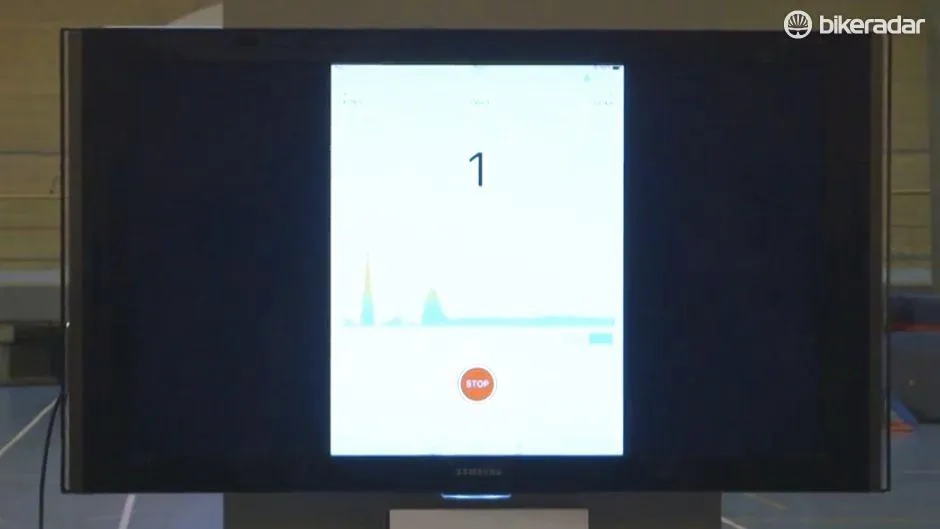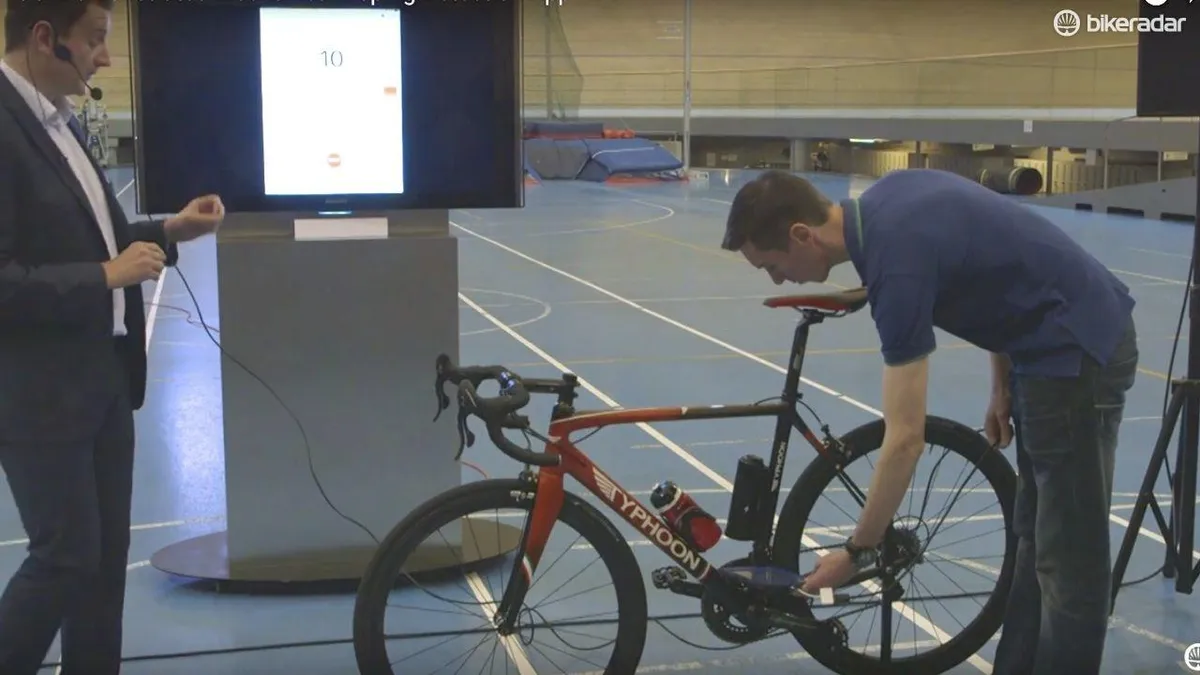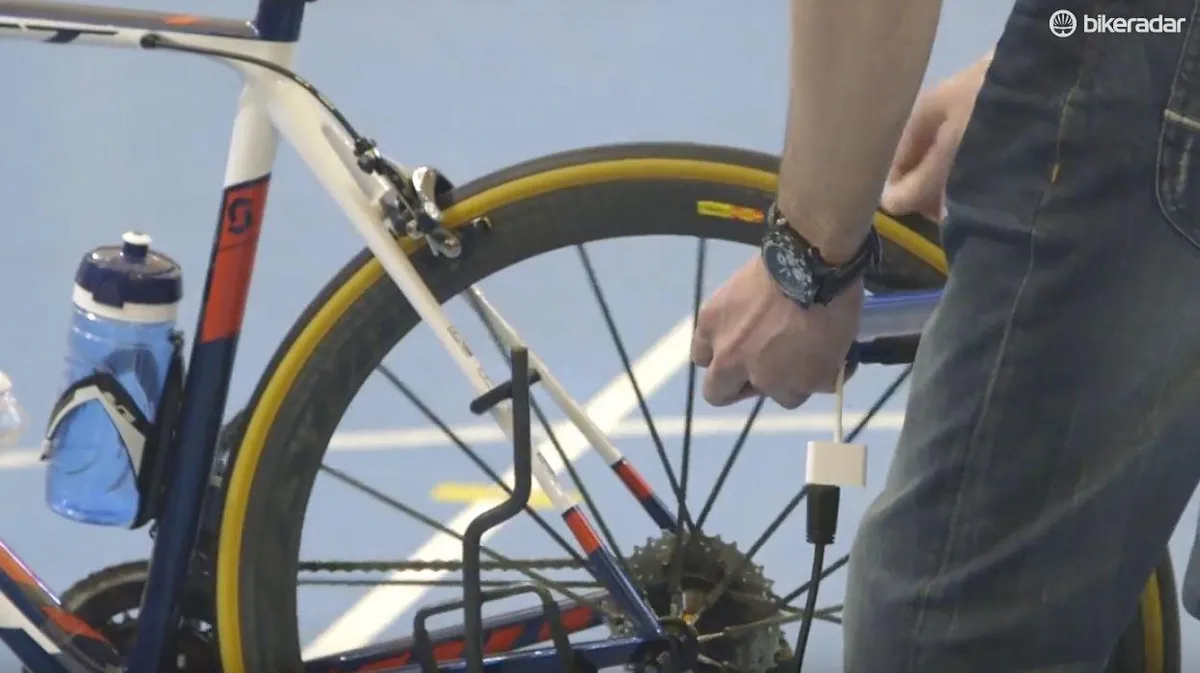In a bold move designed to silence recent critics, cycling's governing body the UCI has shown off the technology it uses to check for hidden motors – and it's basically an iPad with a special case.
The UCI invited selected media, including our sister site Cyclingnews, over to its Swiss HQ for a special demonstration. The system hit the headlines earlier this year after it caught out Dutch cyclocross rider Femke Van den Driessche.
So what high-tech solution does the UCI use? Custom nanosensors perhaps? Or maybe X-ray light field cameras? Nope, it's an iPad Mini, partnered with a magnetometer that's housed in a special case, powered by a custom app. In fact, it's not so different from the many apps already available on the App Store, like this Teslameter app.
How to detect technological fraud
But that's not to say that the solution is cheap: the UCI has worked with a range of partners, including e-bike specialist Typhoon Bicycles and a UK medical technology company, to develop a system that's robust and reliable at catching the cheats.
The recent demonstration of this technology appears calculated to disprove critics, such as the French Stade 2 television programme and Italian newspaper Corriere della Sera, which suggested that only thermal imaging equipment can do the job.
Massive resources

The new iPad-based system is a "good answer", says UCI president Brian Cookson
“There’s been a huge amount of interest in this and that we’re not taking it seriously enough, that the technology is not well researched; so we wanted to demonstrate that we’ve put a massive amount of resources into this and that we’ve got a really good system and partners that have helped us develop the technology,” UCI president Brian Cookson told Cyclingnews.
“Technological fraud is something we think is a serious threat to our sport and so we’re taking it seriously and taking appropriate action. We know that the technology exists and we have invasive testing.
"Now we’ve got a system that is effective as the demonstration showed. It can be done quickly, can do large number of bikes before an event, after an event and even during an event when bikes are changed during races. I think we’ve got something that is a good answer to the problem."
The UCI's technical manager Mark Barfield demonstrated the technology on a Typhoon e-bike, which looks much like a regular road bike and hides the motor within its frame, and the battery within the bottle cage. These high-end bikes are completely legal when sold to consumers, and Typhoon's founders approached the UCI when they realised they could help beat the mechanical doping issue.
Don't forget the cable guides

Small readings were detected on the "clean" test bike, due to ferrous items like cable guides
The sensor is designed to detect changes in magnetic flux density, and therefore will work even if the motor is not switched on. In the UCI's demonstration, some small readings were detected on the "clean" test bike, as is normal when ferrous items like cable guides are used.
Barfield revealed that the tests normally take 20-30 seconds per bike, to test the frame and wheels – though he was careful to mention that electromagnetic wheels remain a "theoretical model" for the moment.
When the demonstrator moved on to the Typhoon e-bike, the iPad and sensor generated much higher magnetic flux density for the seat tube and bottom bracket area – indicating that there was in fact a hidden motor.
We reached out earlier today to both the UCI and Typhoon Bicycles for further comment on this system, asking whether other parties could develop their own version. The UCI says they'll get back to us with more information next week.
Too many bikes

The test readings on the Typhoon bike went quickly into double figures
We were told by Typhoon's marketing director, Russell Carty, that a key advantage of using an iPad Mini with magnetometer is that it's portable and quick: "To do a whole Tour of bikes it's just not possible, there are too many bikes.
"They [the UCI] looked at different ways, the heat sensor way, taking the bikes apart, which teams don't like. To keep the teams happy that the bikes aren't gone from them for very long, the iPad-based system can quickly go through more bikes."
Another important consideration is cost: the UCI wants to run the test across all the national cycling federations. As Carty told us, "That's where they have more problems, with the semi-pros and good amateurs."
Testing strategy

Testing enough bikes quickly is a key challenge for the UCI
Which brings us on to the final piece of the puzzle – where and when the tests are carried out. The UCI has already carried out lots of checks this year using the new system, but is reluctant to discuss their testing strategy, for obvious reasons.
“At races we approach a team and so they make their bikes outside on bus and on cars available," Barfield told Cyclingnews. "Then we go to the finish and we monitor the race, we speak to race officials and we follow the race on television and social media."
Barfield says that this helps his team of testers get an idea of who to test and why. Sometimes, they'll only test the bikes of the top few riders, other times they'll do 35 in one go. "It’s important to be flexible and unpredictable,” he adds.
What do you think of the UCI's iPad-based system? Let us know in the comments below.